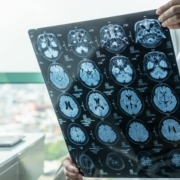How to Detect Alzheimer’s Early
Despite extensive research, there is currently no laboratory or imaging test that can conclusively make an early diagnosis of Alzheimer’s disease (AD). It is only when the disease has progressed that healthcare workers are able to make a diagnosis of Alzheimer’s disease. What makes the diagnosis difficult is that the symptoms are often non-specific and may mimic many other brain disorders. By making an early diagnosis of AD, the caregivers know what to expect and can better make plans for the future. Experts in Alzheimer’s disease state that for many families the best way to know how to detect Alzheimer’s early is to closely watch for the warning signs and symptoms of memory loss and cognitive decline. Catching Alzheimer’s early can provide better treatment and care. These signs and symptoms include the following:
- Memory loss. One of the earliest signs of how to detect Alzheimer’s early is to notice if the individual is forgetting recent events or things. For example, the individual may forget important events or dates or continue to ask the same question repeatedly. He or she may increasingly rely on a memory aid like reminder notes or assistance from the family to remind him how to do things or when to do certain tasks. For example, the individual may forget that he had a doctor’s appointment today or he left the hot water in the sink running for the 8th time this week alone. Initially, the memory loss may be attributed to just forgetfulness, but with time it becomes more persistent.
- Difficulty solving basic problems. The individual may have been very smart once but now you notice he or she is not able to solve simple problems. He may not be able to keep track of his monthly budget or have little idea how to screw in a light bulb. Others may have trouble with numbers, like simple addition and subtraction. And most of all they lack concentration and often take a long time to complete even the most basic tasks, frequently giving up very easily on tasks. Catching Alzheimer’s early can lead to more treatment options.
- Inability to complete familiar tasks. Another common early sign of AD is the inability to complete very familiar tasks. For example, the individual may not be able to make a grocery list or remember how to set time on the microwave. He or she may not even know which key fits the front door.
- Loss of orientation. People with AD readily lose track of time, place, and date. They may have great difficulty understanding if they do not see the event happen in front of their eyes. They often forget where they are, lose track of time, and even forget how they got to that location. Because of the loss of orientation, many AD individuals get lost even in familiar surroundings.
- Difficulty understanding spatial relationships and visual geometry. A fair number of people with AD have visual problems that can lead to difficulty in reading and/or balance. These visual difficulties usually make it challenging for the individual to judge the driving distance between cars, determine contrast and color, and not be able to discern the spatial relationships of other cars on the road. For this reason, they are often unable to park their car and are frequently involved in motor vehicle accidents.
- Difficulty starting new conversations or writing. Individuals with AD frequently have difficulty initiating new conversations or writing. They may suddenly stop in the middle of the sentence and may either repeat themselves or have no idea what they are saying. They commonly struggle with words, naming familiar objects, or using the wrong term to label objects. For example, the individual may call the oven a food container or the refrigerator may be called an oven.
- Misplacing items. Another common feature of AD is misplacing things or items. For example, the individual may forget where he put his watch or eyeglasses, and worse, he or she may have no idea how to go about searching for the items. It is very common for an individual suffering from AD to accuse others of stealing his personal belongings.
- Poor judgment. As the disease progresses, AD individuals may show poor judgment. For example, they may dress inappropriately, pay outrageous amounts for cheap items, or have poor grooming habits. In addition, they may say inappropriate things. Finally, it is not uncommon for AD individuals to forget about putting gas in the car.
- Withdrawn. A common feature of AD is that the individual will become withdrawn and not participate in any social activity. These individuals tend to be loners, doing their own thing, and rarely interacting with others. During this phase of the disease, they lose interest in many things that they used to enjoy.
- Change in mood and personality. Finally, another feature of AD individuals is the marked change in mood and personality. The individual may suddenly become fearful, suspicious, paranoid, anxious, and/or depressed. When out of their comfort zone, they may become agitated or angry. Often, they may physically strike others when angry or upset.
How to detect Alzheimer’s early can be a challenge. Keeping a diary of the symptoms can help the caregiver note the progression of the disease. It also helps the healthcare provider make an early diagnosis of AD. Catching Alzheimer’s early can help with better treatment options. However, even with a diary of the potential symptoms of AD, healthcare workers will still perform certain investigations to confirm the diagnosis.
Formal Diagnosis
- Blood tests: The usual blood tests are ordered to rule out other disorders with similar symptoms. For example, low levels of thyroid hormone or heavy metal poisoning can present with similar symptoms.
- Biomarkers: Today, two biomarkers used to measure the presence of AD include tau protein and amyloid protein. The fluid from the spinal cord is used to analyze these markers, both of which are known to play a role in AD. As well, the presence of these biomarkers can confirm the diagnosis of AD.
- Brain imaging: With the use of MRI and PET scans, imaging technology can be used to assess individuals with AD. These scanning techniques can determine the presence of amyloid plaques and determine which patient may benefit from the latest biological therapy.
- Cognitive assessment: Whenever AD is suspected, healthcare providers perform a variety of cognitive assessment tests. These tests are quite sensitive and can help make an early diagnosis of the disorder. The tests can also provide a clue as to how severe the symptoms are.
- Loss of smell tests: Some patients with AD develop loss of smell early in the disease. Identifying loss of smell early can help suggest the diagnosis of AD. But it is important to know that loss of smell is also common in other brain disorders, such as Parkinson’s disease.
CONCLUSION
It’s important to know how to detect Alzheimer’s early as it may help caregivers prepare for the future and also help healthcare providers use interventions to slow down the progression of the disease. If you have a family member you suspect of having AD, work on catching Alzheimer’s early. Start by creating a diary and follow up closely with a healthcare provider.
There is another resource in Cano Health. Their team of doctors and medical specialists focuses primarily on seniors and their primary goal is to offer seniors excellent healthcare. Cano Health is one of the country’s leading providers for seniors, accepting both Medicare and Medicaid. Call them today at 1-855-975-5119.







